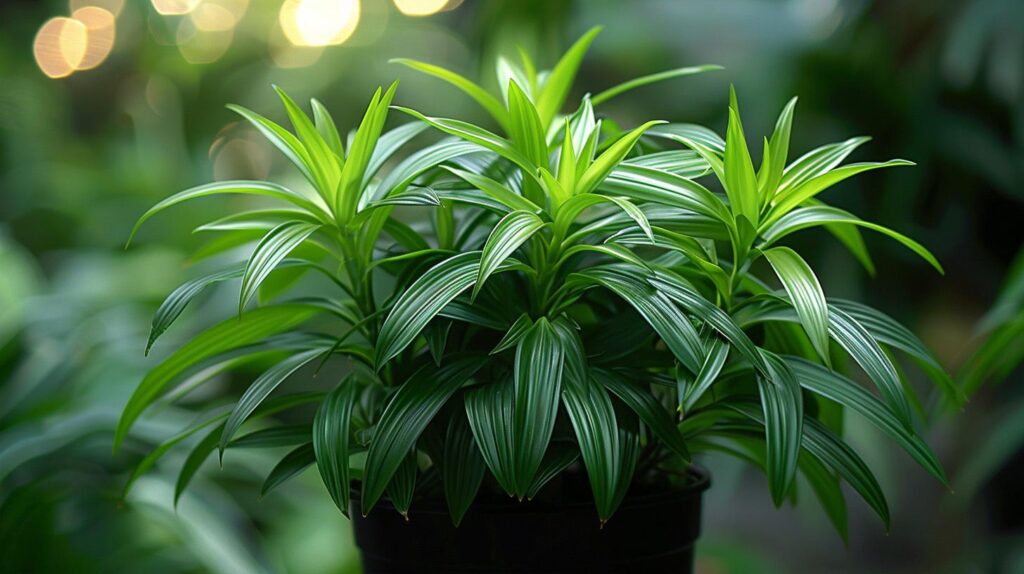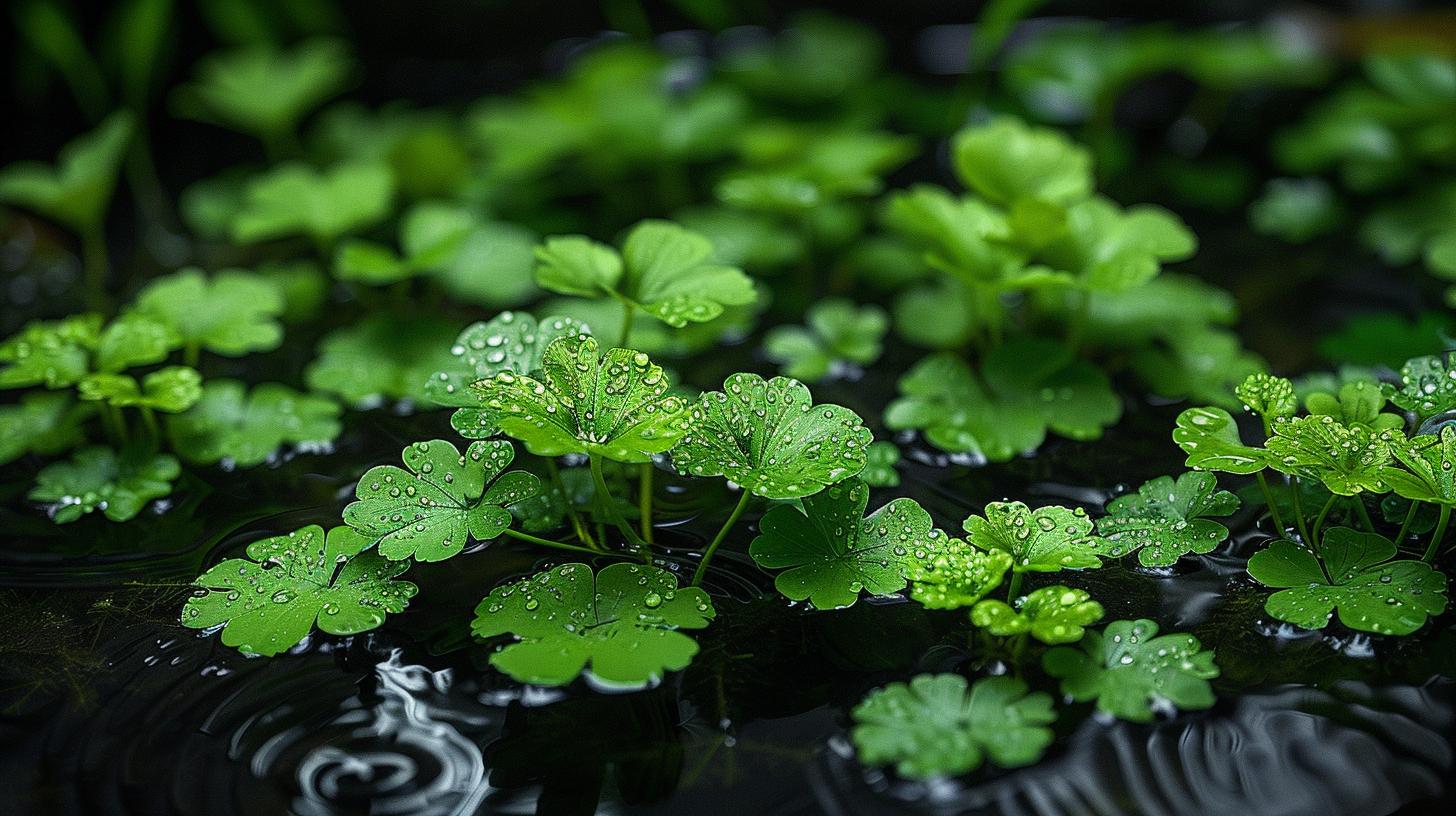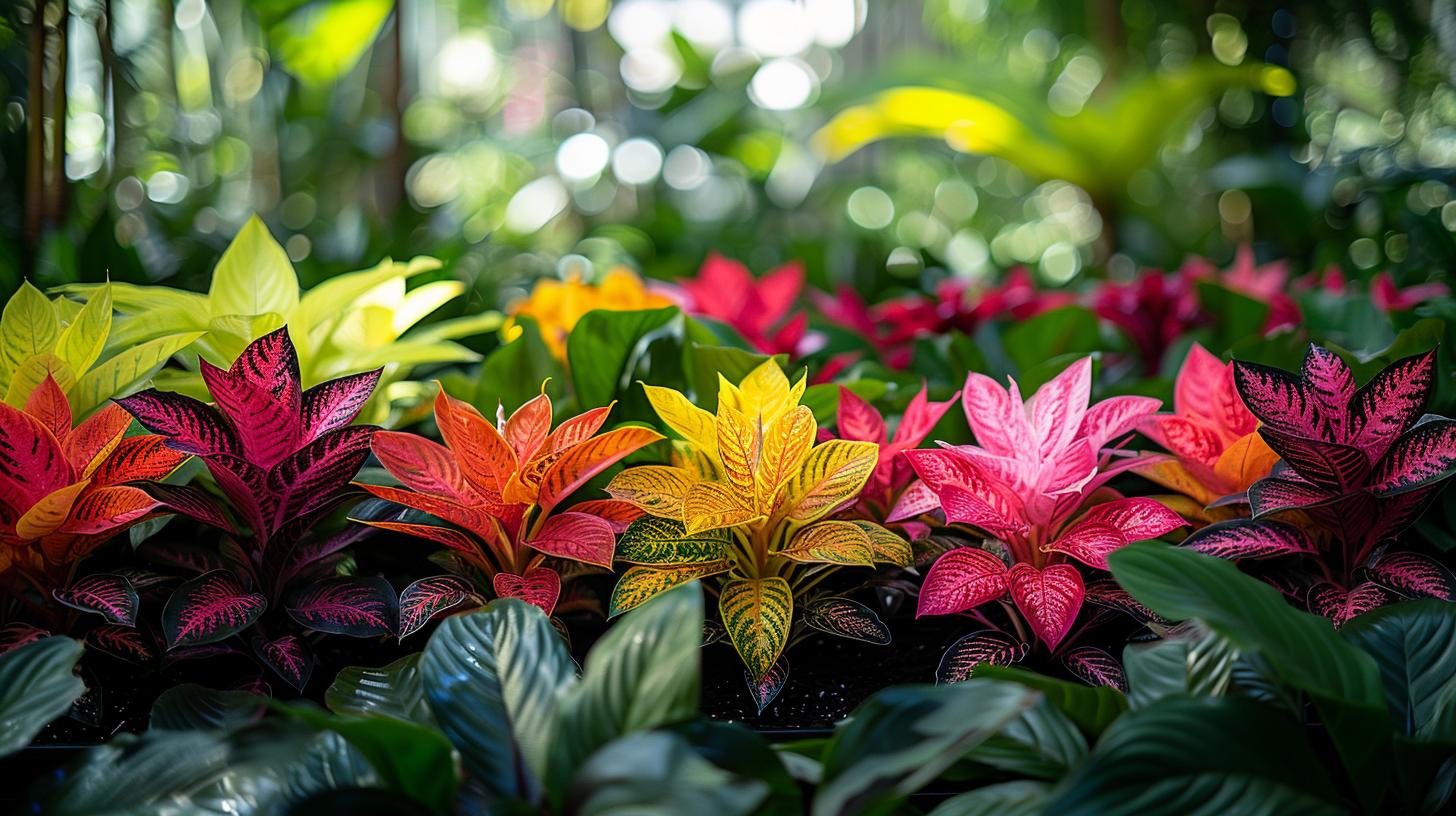Top 5 Safe Plants for Reptile Habitats

- Understanding the Importance of Choosing Safe Habitat Plants for Reptiles
- Criteria for Selecting Safe Plants for Reptile Habitats
- Top 5 Safe Plants for Reptile Habitats
- Benefits of Including Safe Plants in Reptile Habitats
- Care and Maintenance Tips for Habitat Plants
- Common Mistakes to Avoid When Choosing Plants
- Wrapping Up
- Frequently Asked Questions
Understanding the Importance of Choosing Safe Habitat Plants for Reptiles
Creating a comfortable and safe environment for reptile pets starts with the careful selection of safe habitat plants. Just like choosing the right food or substrate, ensuring that the plants within a reptile's enclosure are non-toxic and beneficial is paramount to their health and happiness. This initial step is crucial not only for aesthetic purposes but more importantly, for replicating a slice of their natural ecosystem right inside your home.
Understanding the significance of this choice begins with recognizing that every detail in a reptile's habitat plays a substantial role in its overall well-being. Reptiles, depending on their species, require specific conditions to thrive-ranging from humidity levels to temperature settings.
The introduction of inappropriate plants could disrupt these delicate balances, leading to potential health issues or discomfort. Therefore, laying out clear criteria for selecting compatible flora becomes an essential guide for pet owners striving to create an ideal environment.
Moreover, navigating through the numerous options available can be overwhelming without proper guidance. Not all plants are created equal when it comes to reptile habitats; some can be toxic if ingested, while others might have physical features that pose risks (like sharp edges).
To eliminate these dangers, understanding what makes certain plants "safe" is as critical as knowing which ones to avoid. The forthcoming segments aim to demystify this selection process, starting with detailed criteria followed by examples of suitable plant choices and their care requirements-ensuring your reptilian companion not only survives but thrives in its meticulously crafted haven.
Criteria for Selecting Safe Plants for Reptile Habitats
Selecting the right plants for your reptile's habitat goes beyond just picking out the most attractive options at your local nursery. Understanding the specific criteria that make certain plants safe habitat plants is crucial for ensuring the health and safety of your pet reptile. These criteria include but are not limited to, non-toxicity, physical safety, and compatibility with your reptile's environmental needs.
Firstly, non-toxicity is paramount when choosing plants for a reptile enclosure. Many common houseplants can be harmful if ingested by reptiles, leading to serious health issues or even fatalities. Therefore, researching each plant's potential toxicity to your pet is an essential step in creating a safe haven. This process involves consulting with veterinarians or reputable sources dedicated to reptilian care to compile a list of plants known to be harmless to reptiles.
Secondly, ensuring the physical safety of a plant involves examining its structure and growth patterns. Plants with sharp edges or thorns should be avoided as they could injure your pet. Likewise, some plants have leaves or flowers that may detach easily and could pose choking hazards if ingested inadvertently by smaller reptiles. Opting for plants with soft foliage and those that maintain their integrity well under the conditions in a terrarium can mitigate these risks effectively.
Lastly, paying attention to a plant's environmental requirements such as preferred levels of humidity and temperature is critical. Not all plants thrive in the same conditions that are ideal for your reptile's health and comfort. Matching these requirements ensures that both your pets and their green companions can coexist harmoniously without one adversely affecting the other's well-being. This minimizes stress levels in reptiles which is pivotal for their overall health.
- Humidity Requirements: Select plants that match or tolerate the humidity levels needed by your particular species of reptile.
- Temperature Tolerance: Ensure that chosen plants can withstand the temperate ranges within your terrarium.
- Lighting Needs: Some plants require high light conditions which might not be compatible with what your reptile species requires; look for those whose lighting needs align.
Understanding and applying these criteria when selecting safe habitat plants not only contribute to creating an aesthetically pleasing environment but also play a significant role in maintaining the physical and psychological wellness of captive reptiles. As we move forward into discussing specific examples of safe habitat plants, keeping these guidelines in mind will aid in making informed decisions that benefit both you and your scaly companion.
Top 5 Safe Plants for Reptile Habitats
In the quest to create a thriving and naturalistic habitat for reptiles, the careful selection of safe habitat plants becomes paramount. This endeavor not only accentuates the aesthetic appeal of the enclosure but also plays a critical role in replicating a slice of the wild, thereby ensuring the well-being and happiness of our cold-blooded companions. The following list has been meticulously curated to guide pet owners through incorporating non-toxic, safe, and beneficial flora into their reptile habitats.
First on our list is the Spider Plant (*Chlorophytum comosum*), renowned for its resilience and ease of care. This plant is an excellent choice for reptilian habitats due to its non-toxicity and ability to thrive in a range of lighting conditions.
Its long, arching leaves provide ample cover and climbing opportunities for smaller reptiles, while also aiding in humidity regulation within the enclosure. Moreover, spider plants are effective in purifying air quality, thus contributing to a healthier environment for your pet.
Next, we have the Boston Fern (*Nephrolepis exaltata*), another prime candidate for reptile enclosures. This lush fern adds a splash of verdancy to habitats and thrives in humid conditions, making it suitable for species requiring higher moisture levels. The Boston Fern's soft fronds offer shelter without posing risks of injury with sharp edges - a quintessential feature when considering *safe habitat plants*. Importantly, this fern's non-toxic nature ensures that accidental ingestion won't harm your reptilian friend.
Rounding off our top three is the Tillandsia or Air Plant. This unique plant does not require soil to grow; instead, it absorbs moisture and nutrients from the air through its leaves. It's an excellent addition to enclosures as it introduces minimal mess while enhancing visual interest with its intriguing forms. Its adaptability allows placement in various parts of the habitat, catering to different lighting needs and creating varied enrichment zones for your pet.

To integrate these plants effectively into your reptile's home:
- Ensure adequate lighting based on each plant's requirements.
- Regularly monitor humidity levels to match both plant and reptile needs.
- Maintain cleanliness by removing any dead leaves promptly.
Incorporating these *safe habitat plants* can transform your reptile's enclosure from a simple tank into a dynamic ecosystem that supports their natural behaviors and contributes positively to their overall health. Moving forward, we'll delve into additional benefits such greenery brings into play within these specialized living spaces, emphasizing how they serve more than mere decorative purposes by actively enriching your pet's life.
Benefits of Including Safe Plants in Reptile Habitats
Introducing *safe habitat plants* into the confines of a reptile's living environment transforms it from a mere enclosure to a dynamic ecosystem that mirrors their natural habitat. This infusion not only elevates the aesthetic appeal of the habitat but also plays a pivotal role in maintaining the physical and psychological well-being of reptiles.
The presence of live plants can drastically improve air quality by increasing oxygen levels and filtering out toxins, creating a fresher and healthier atmosphere for both the reptile and its owner.
Moreover, safe habitat plants function as more than just decorative elements; they serve crucial practical purposes that contribute significantly to a reptile's quality of life. For instance, foliage provides essential shade and hiding spots where reptiles can retreat for stress relief and privacy, emulating their behavior in the wild. This is particularly beneficial for shy or nocturnal species that thrive in environments where they can navigate between being visible and concealed at will.
Additionally, these plants help in regulating humidity within the habitat-an aspect vital to the health of many reptilian species. Maintaining appropriate humidity levels is key in preventing health issues such as respiratory infections or shed problems.
| Plant | Benefits |
|---|---|
| Ferns | Increase humidity, provide cover. |
| Orchids | Purify air, add visual interest. |
| Succulents | Require minimal water, easy to maintain. |
It is essential to consider that while incorporating live *safe habitat plants* introduces several benefits, selecting the right varieties that align with your reptile's specific needs remains paramount. Species compatibility with environmental conditions like temperature and light requirements must be taken into account to ensure that both your pet and your plants thrive alongside each other.
This careful selection process supports a symbiotic relationship within the habitat-a step towards creating a self-sustaining ecosystem that mimics Mother Nature's complexity and resilience.
By enhancing environmental aesthetics and facilitating natural behaviors through strategically chosen vegetation, pet owners can greatly increase their reptiles' overall satisfaction levels. Moving forward, understanding how to properly care for these safe habitat plants ensures their longevity and effectiveness in fulfilling their roles within the ecosystem, embodying a true marriage of form and function inside your reptile's living space.
Care and Maintenance Tips for Habitat Plants
Ensuring that the plants within your reptile's habitat remain vibrant and healthy is not just a matter of aesthetics; it directly impacts the environment your pet lives in. Just as you cater to the specific dietary needs of your reptiles, safe habitat plants require tailored care to thrive.
Understanding the unique requirements of each plant variety you introduce into the enclosure is step one in achieving a dynamic, life-supporting ecosystem for your cold-blooded companion. This commitment to care doesn't just reflect well on the habitat's appearance-it ensures that all plants continue to fulfill their role in creating a balanced, stress-free environment for your reptiles.
Selecting the Right Soil and Fertilizers
Every plant has specific soil preferences, ranging from pH levels to texture and nutrient content. For instance, some safe habitat plants might prefer well-draining soil to prevent root rot, which can be common in humid terrarium settings. When it comes to fertilizers, opt for organic options free from chemicals that could harm your reptile.
Chemical-based fertilizers might offer quicker growth but pose a significant risk if ingested by your pet or if they leach harmful substances into the environment. Regularly check the soil's condition and make amendments as needed to keep it conducive for plant growth without compromising on safety.
Lighting Needs and Watering Schedules
Adequate lighting is crucial for photosynthesis, yet the needs can vastly differ among plants. While some may thrive under direct sunlight, others might need filtered light or even artificial grow lights specially designed for terrarium use.
Align these lighting needs with what's suitable for your reptile to ensure harmony within the habitat. Similarly, understanding each plant's watering requirements will help prevent common issues like overwatering or dehydration-both can lead to an unhealthy plant that fails to contribute positively to the enclosure's ecosystem.
Maintaining an optimal balance wherein both your reptilian pets and their surrounding flora can prosper might seem daunting at first glance. However, investing time into learning about proper care techniques ensures that you create a self-sustaining environment where nature does much of the work for you.
Remember, healthy safe habitat plants not only enhance the physical space but also play a pivotal role in filtering air and maintaining humidity levels-making them indispensable allies in nurturing a thriving reptile home.
Common Mistakes to Avoid When Choosing Plants
When it comes to creating the ideal environment for reptile pets, incorporating plants into their habitat seems like a straightforward way to mimic their natural surroundings and enhance their living space. However, the process of selecting the right foliage isn't as simple as picking out the most visually appealing options from a garden center.

A number of common pitfalls await the unwary pet owner, leading to potential health risks for their scaled companions. Awareness and careful consideration are key in navigating through these challenges to ensure a safe and enriching habitat.
Choosing plants for a reptile enclosure goes beyond aesthetics; it touches on the very health and well-being of these delicate creatures. Many well-intentioned owners, eager to green up their pet's space, fall into traps that could easily have been avoided with some prior knowledge and preparation. Understanding these mistakes is crucial not only for creating a visually stimulating environment but also for maintaining the optimal health of reptilian pets.
Ignoring Plant Toxicity
One of the first and most dangerous mistakes is overlooking plant toxicity Not all plants conducive to human environments are suitable for reptiles. Some contain harmful chemicals that can cause serious health issues or even prove fatal if ingested by pets. Ensuring you select safe habitat plants known for their non-toxicity should be paramount in your mind during the selection process.
Selecting Incompatible Environmental Requirements
Another common oversight involves neglecting a plant's environmental requirements - such as humidity levels, temperature, and lighting needs - which may not align with those of your reptile's habitat. Incorporating a tropical plant into an arid setup (or vice versa) not only jeopardizes the plant's survival but can also disrupt the carefully controlled environment of your pet. Matching plants not just in aesthetic but also in functional compatibility guarantees a thriving ecosystem within your terrarium or enclosure.
Overlooking Physical Safety
Finally, physical safety concerns often go unnoticed until an issue arises. Plants with sharp edges or thorns pose evident risks of injury to curious creatures exploring their surroundings. Additionally, small or delicate plants that easily break apart might become unintentional ingestion hazards. Opting for robust plants without dangerous features ensures both beauty and safety coexist harmoniously within your reptile's habitat.
In essence, steering clear of these common mistakes requires attention to detail and a willingness to research before introducing new plants into a reptile's living space. By prioritizing non-toxic varieties, considering environmental needs, and focusing on physical safety, pet owners can significantly enhance their reptiles' enclosures without sacrificing peace of mind.
Wrapping Up
As we conclude our journey through the verdant world of safe habitat plants for reptiles, let's remember that the well-being of our scaly companions hinges on the thoughtful choices we make. Creating a vibrant and thriving environment for your reptile isn't just about aesthetics; it's about fostering a space that mirrors their natural habitat as closely as possible.
By electing to incorporate safe plants into their homes, we take a substantial step toward achieving this goal, contributing to their health, happiness, and longevity.
Throughout this exploration, from understanding the indispensable role of selecting non-toxic greenery to diving into the specifics of plant care and maintenance, we've equipped ourselves with invaluable insights. Armed with knowledge on criteria for choosing right and learning from common missteps, every reptile enthusiast can now confidently transform a simple enclosure into a sanctuary brimming with life.
This not only enriches our pets' lives but also enhances our connection to them as we curate slices of nature within our homes.
We hope this piece has inspired you to consider integrating safe habitat plants into your reptile's environment. For those ready to embark on this green endeavor, or seeking further enlightenment on creating harmonious habitats for their pets, our website offers an extensive collection of resources designed to guide you every step of the way.
Discover more articles filled with expert advice and embrace the joy of crafting perfect little ecosystems for your beloved companions. Click through to continue your journey towards becoming an exemplary pet guardian in a world where knowledge truly is power.
Frequently Asked Questions
What Is the Most Resilient Plant in Nature?
When discussing resilience in the plant world, the Welwitschia mirabilis often comes to the forefront. This remarkable plant, native to the desert regions of southern Africa, can live for over a thousand years. It thrives under extreme heat and drought conditions by drawing moisture from fog that sweeps over the deserts.
What Plants Are Good for Nesting Birds?
Plants that provide dense foliage or thorny protection are excellent choices for nesting birds. Species such as hawthorn, dense ivy, and evergreens offer shelter and security for birds to build their nests. These plants not only supply a safe haven but also serve as sources of food for the avian residents throughout various seasons.
What Is the Natural Habitat of Plants?
The natural habitat of plants varies widely, encompassing environments like dense tropical rainforests, arid deserts, chilly tundra regions, and everything in between. Each plant species has evolved unique adaptations to thrive in its specific environment, whether it's developing deep root systems to access water or broad leaves to capture sunlight in forest understories.
What Plants Are Good for Pollinators?
Plants that are particularly beneficial for pollinators include those that produce abundant nectar and pollen. Examples include lavender, salvia, milkweed, and sunflowers. These plants support a range of pollinators by providing them with necessary nutrients through different seasons.
What Is the Best Survival Plant?
The best survival plant is subjective and depends on specific needs like nutrition or medicinal properties. However, many consider the moringa oleifera as one of the top survival plants due to its nutrient-rich leaves that are high in vitamins and minerals. It's fast-growing, drought-resistant, and almost every part of the plant can be utilized.
What Plant Can Survive in Any Environment?
Mosses are remarkable in their ability to survive in almost any environment, from deep forests to barren rocky landscapes - even thriving in urban settings where pollution levels might stunt other vegetation's growth. Their simple structure allows them to adapt and flourish without extensive root systems or access to consistent water sources, making them versatile survivors across diverse climates.
Leave a Reply
You must be logged in to post a comment.